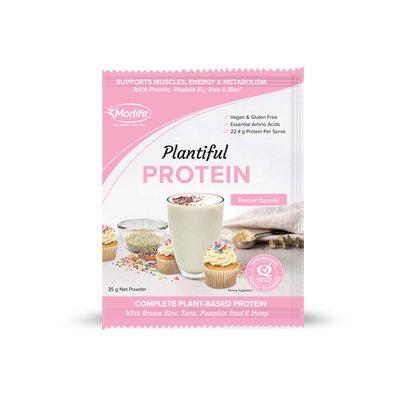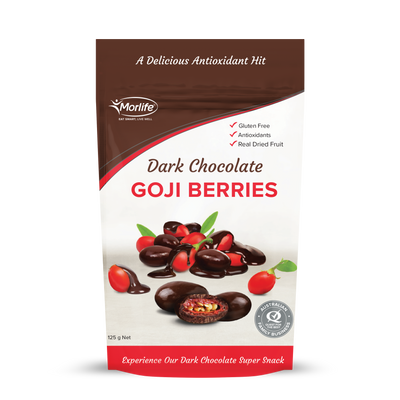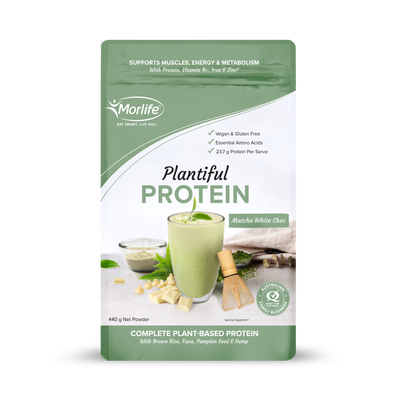White Rice vs. Brown Rice vs. Quinoa
Which is more beneficial?

Walking the supermarket isles has never been more confusing when trying to do what’s best for your families’ health as well as your own. White rice is a main food source for over half the world’s population, and while it used to be your only choice as an affordable meal base, today, many other options are finding their way to supermarket shelves, and even better, they are becoming more and more affordable as the awareness and demand for healthier selections increase. Now the question is; which should I choose?
White Rice
While white rice is for a lot of consumers, the safest known choice, research is starting to show that its not the best friend we thought it was. Higher consumption of white rice has been linked to a significantly increased risk of type 2 diabetes (Hu et al. 2012). Substituting white rice with whole grains such as brown rice or quinoa is an easy way to reduce the risk of type 2 diabetes (Sun et al 2010). Consuming whole-grains has also been found to protect against heart disease (Liu et al. 1999) along with many other diet related conditions.
White rice has been refined which removes both the bran and germ from the grain. This generally makes the rice easier to chew and digest, however during refinement, the process also removes a lot of the fibre content as well as important vitamins and minerals. This means, that in order to get the most nutrition from our foods, we should switch from refined foods like white rice for the wholegrain equivalents such as brown rice or quinoa.
Brown Rice
Brown rice has been building in popularity ever since people started to realise white rice wasn’t doing them many favours. It takes a little longer to cook than white rice, but that bit of extra effort packs a lot of extra nutritional punch to your everyday meals. As brown rice has not been refined, it contains both the bran and germ, which is the most nutritious part of the grain! Brown rice is higher than white rice in Vitamin B1, B2, B3, B6, folate, Iron, Magnesium, Phosphorus, Potassium and Zinc (USDA 2013a & USDA 2013b).
One of the biggest issues for brown rice (and all wholegrains) is phytic acid or phytate. Phytate is essentially a nutrient that binds to other nutrients and prevents their absorption. White rice has had most of its phytic acid content removed through processing, but it is still there in brown rice. To combat the phytic acid, it is recommended to sprout, sour or soak your brown rice prior to cooking. The most convenient and time realistic solution is soaking, just by soaking your brown rice overnight, draining and rinsing prior to cooking the enzyme phytase is released which neutralises the effect of phytic acid (Sandberg 1991), so by putting your rice out the night before soaking in water, your able to enjoy all the benefits brown rice has to offer. Another solution to phytic acid is to increase the probiotic content in the stomach, as these good bacteria also produce the phytase enzyme which neutralises the phytate (Famularo et al. 2005).
Quinoa
Quinoa is another ancient superfood to undergo a huge boom in demand, whereas it was once a secret of the Incans, today, its nutritional superiority is recognised around the world, causing demand for quinoa to rise to record breaking levels. Quinoa or as its pronounced “keen-wah” is actually a seed, not a grain as its perceived, however that doesn’t stop it from being interchangeable with many everyday recipes requiring grains. Quinoa is a great source of antioxidants, essential vitamins and minerals, protein and fibre, and in fact, can be considered the perfect complete vegetarian source for protein, as it contains all nine essential amino acids that must be provided by the diet. (Jancurova, Minarovicova & Dandar 2009) Not to mention, quinoa is also a great Gluten free choice.
Quinoa has a mild nutty flavour that blends well with most food styles, making it a truly versatile product. If prepared incorrectly however, quinoa can have a bitter taste due to the saponin content on the outer layer of the seed, however simply rinsing the seed in cold water prior to cooking will remove the saponins. Most quinoa available in stores has already been cleaned, it is best to perform your own quick rinse again just to ensure the bitter taste does not effect your cooking.
The Low GI Challenge
If we haven’t given you enough to digest, we can through the Glycemic Index hat into the ring.
The Glycemic Index (GI) ranks carbohydrates in food according to their effect on blood glucose levels. The lower the GI, the slower the rise in blood glucose levels after food consumption. Low GI foods have been linked to diabetes management (Brand-Miller et al 2003), improved plasma lipid profiles and a decrease in total body fat mass (Bouche et al 2002).
|
|
GI |
Score meaning |
|
White Rice |
64 |
Medium GI |
|
Brown Rice |
55 |
Low GI |
|
Quinoa |
53 |
Low GI |
Based on the Glycemic Index (GI), we can conclude Quinoa to be the winner of the Low GI challenge, as its average was lowest when compared to both white and brown rice, so chew on that food for thought.
The Low GI Challenge Data
- “Low GI foods are those measured 55 and less, medium GI are those measured between 56 and 69, while high GI measures 70 and above.” (CSIRO 2012)
- “Research analysing 235 types of rice from around the world has found its glycemic index (GI) varies from one type of rice to another with most varieties scoring a low to medium GI” (CSIRO 2012).
- The study from CSIRO (2012) found that the GI of Rice ranges from a low of 48 to a high of 92 depending on the type of rice consumed.
- A systematic review found the average GI for white rice is 64 and brown rice is 55 (Foster-Powell, Holt & Brand-Miller 2002)
- Quinoa, cooked, refrigerated and reheated in a microwave for 1.5m GI 53 (The University of Sydney 2003)
Numbers Don’t Lie - Nutrition Panel Comparison
|
Nutrient |
Unit per 100g |
White Rice, Long-grain, cooked |
Brown Rice, Long grain, cooked |
Quinoa, cooked |
|
Energy |
kj |
543.92 |
464.40 |
502.08 |
|
Protein |
g |
2.69 |
2.58 |
4.40 |
|
Fat (total lipid) |
g |
0.28 |
0.90 |
1.92 |
|
- saturated |
g |
0.077 |
0.18 |
0.231 |
|
- monounsaturated |
g |
0.088 |
0.327 |
0.528 |
|
- polyunsaturated |
g |
0.076 |
0.323 |
1.078 |
|
Carbohydrates |
g |
28.17 |
22.96 |
21.30 |
|
- sugars |
g |
0.05 |
0.35 |
0.87 |
|
- dietary fibre |
g |
0.40 |
1.80 |
2.80 |
|
Sodium |
mg |
1.00 |
5.00 |
7.00 |
|
Calcium |
mg |
10.00 |
10.00 |
17.00 |
|
Iron |
mg |
0.20 |
0.42 |
1.49 |
|
Magnesium |
mg |
12.00 |
43.00 |
64.00 |
|
Phosphorus |
mg |
43.00 |
83.00 |
152.00 |
|
Potassium |
mg |
35.00 |
43.00 |
172.00 |
|
Zinc |
mg |
0.49 |
0.63 |
1.09 |
|
Vitamin C |
mg |
0.00 |
0.00 |
0.00 |
|
Vit B1 (Thiamine) |
mg |
0.02 |
0.096 |
0.107 |
|
Vit B2 (Riboflavin) |
mg |
0.013 |
0.025 |
0.110 |
|
Vit B3 (Niacin) |
mg |
0.40 |
1.528 |
0.412 |
|
Vit B6 (Pyridoxine) |
mg |
0.093 |
0.145 |
0.123 |
|
Vit B9 (Folate) |
µg |
3.00 |
4.00 |
42.00 |
|
Vit B12 |
µg |
0.00 |
0.00 |
0.00 |
|
Vit E (alpha-tocopherol) |
mg |
0.04 |
0.03 |
0.63 |
(USDA 2013a, USDA 2013b, & USDA 2013c)
The Decision
Based on the nutritional panel alone, quinoa is the winner of 16 out of 24 challenges across the 3 products comparison, with white and brown rice each only taking out 3 of the comparison wins. Quinoa truly is a versatile superfood that you should include in your weekly meal planning and don’t forget, it’s not just a savoury rice replacement, quinoa is great in recipes for Breakfast, Lunch and Dinner.
If you're looking to enhance your diet with this incredible grain, you're in the right place! Morlife stocks 3 different quinoa products which you can click through to shop below!
Quinoa Grain Certified Organic
Tricolour Quinoa Grain Certified Organic 1kg
Quinoa Flakes Certified Organic 450g
Photo by alleksana from Pexels
Reference List
Bouche, C, Rizalla, S, Luo, J, Vidal, H, Veronese, A, Pacher, N, Fouquet, C, Lang, V, Slama, G 2002, ‘Five-Week, low-glycemic index diet decreases total fat mass and improves plasma lipid profile in moderately overweight nondiabetic men’, Diabetes Care, vol. 25, no. 5, pp. 822-828 viewed 10 January 2014, http://care.diabetesjournals.org/content/25/5/822.full
Brand-Miller, J, Hayne, S, Petocz, P & Colagiuri, S 2003, ‘Low-Glycemic Index Diets in the Management of Diabetes’, Diabetes Care, vol. 26, no. 8, pp. 2261-2267, viewed 10 January 2014, http://care.diabetesjournals.org/content/26/8/2261.short
CSIRO 2012, Study reveals good news about the GI of rice, viewed 10 January 2014 http://www.csiro.au/Portals/Media/2012/Study-reveals-good-news-about-the-GI-of-rice.aspx
Famularo, G, De Simone, C, Pandery, V, Sahu, A, Minisola, G 2005, ‘Probiotic lactobacilli: an innovative tool to correct the malabsorption syndrome of vegetarians?’, Medical Hypothesis, vol. 65, no. 6, pp. 1132-1135, viewed 14 January 2014, http://www.ncbi.nlm.nih.gov/pubmed/16095846
Foster-Powell, K, Holt, S & Brand-Miller, J 2002, ‘International table of glycemic index and glycemic load values: 2002’, American Journal of Clinical Nutrition, vol. 76, no. 1, pp. 5-56, viewed 10 January 2014, http://www.ncbi.nlm.nih.gov/pubmed/12081815
Hu, E, Pan, A, Malik, V & Sun, Q 2012, ‘White rice consumption and risk of type 2 diabetes: meta-analysis and systematic review’, British Medical Journal, vol. 344, no. e1454, pp. 1-9, viewed 10 January 2014, http://www.ncbi.nlm.nih.gov/pmc/articles/PMC3307808/pdf/bmj.e1454.pdf
Jancurova,M, Minarovicova, L & Dandar, A 2009, ‘Quinoa – a review’, Czech Journal of Food Science, vol. 27, no. 2, pp. 71-79, viewed 14 January 2014, http://www.agriculturejournals.cz/publicFiles/06732.pdf
Liu, S, Stampfer, M, Hu, Frank, Giovannucci, E, Rimm, E, Manson, J, Hennekens, C & Willett, W 1999, ‘Whole-grain consumption and risk of coronary heart diesaes: results from the nurses health study’, American society for clinical nutrition, vol. 70, no. 3, pp. 412-419, viewed 10 January 2014 http://ajcn.nutrition.org/content/70/3/412.short
Sandberg, A 1991, ‘The effect of food processing on phytate hydrolysis and availability of iron and zinc’, Advances in Experimental Medicine and Biology, vol. 289, pp. 499-508, viewed 14 January 2014, http://www.ncbi.nlm.nih.gov/pubmed/1654732
Sun, Q, Spiegelman, D, Van Dam, R, Holmes, M, Malik, V, Willet, W & Hu, F 2010, ‘White Rice, Brown Rice and Risk of Type 2 Diabetes in US Men and Women’, Archives of Internal Medicine, vol. 170, no. 11, pp. 961-969, viewed 10 January 2014 http://archinte.jamanetwork.com/article.aspx?articleid=416025#ref-ioi05001-2
Sydney University’s Glycemic Index Research Service (Human Nutrition Unit, University of Sydney, Australia), unpublished observations, 1995-2007 http://www.glycemicindex.com/foodSearch.php?num=927&ak=detail
The University of Sydney 2003, Glycemic Index Research Service, viewed 10 January 2014, http://www.glycemicindex.com/foodSearch.php?num=927&ak=detail
USDA 2013a, National Nutrient Database for Standard Reference, Release 26 – 20037, Rice, brown, long-grain, cooked, viewed 14 January 2014 http://ndb.nal.usda.gov/ndb/foods/show/6385?fg=&man=&lfacet=&format=&count=&max=25&offset=&sort=&qlookup=brown+rice
USDA 2013b, National Nutrient Database for Standard Reference, Release 26 – 20445, Rice, white, long-grain, regular, cooked, unenriched, without salt, viewed 14 January 2014 http://ndb.nal.usda.gov/ndb/foods/show/6501?fg=&man=&lfacet=&format=&count=&max=25&offset=&sort=&qlookup=white+rice+
USDA 2013c, National Nutrient Database for Standard Reference, Release 26 – 20137, Quinoa, cooked, viewed 14 January 2014, http://ndb.nal.usda.gov/ndb/foods/show/6471?fg=&man=&lfacet=&format=&count=&max=25&offset=&sort=&qlookup=quinoa











